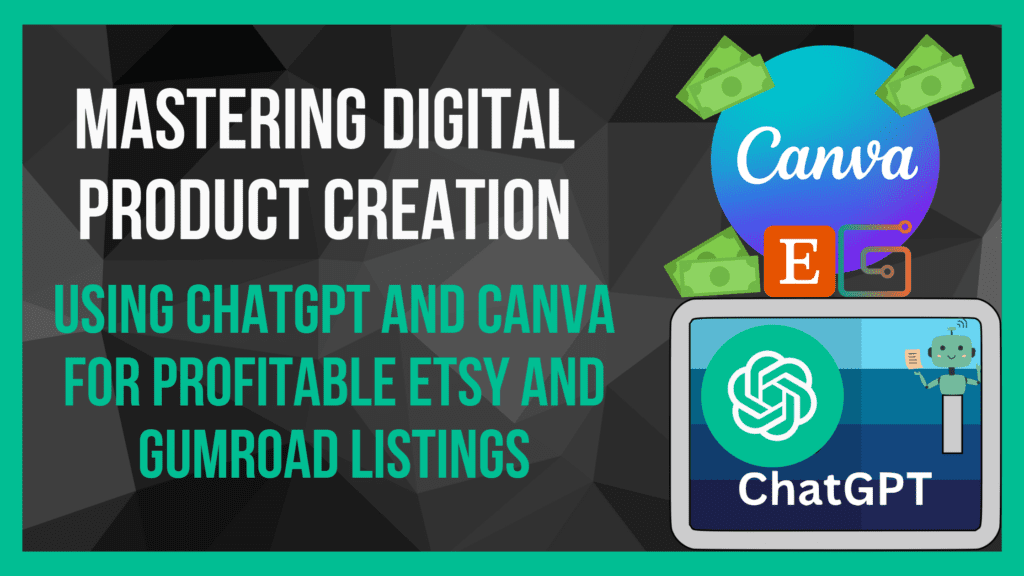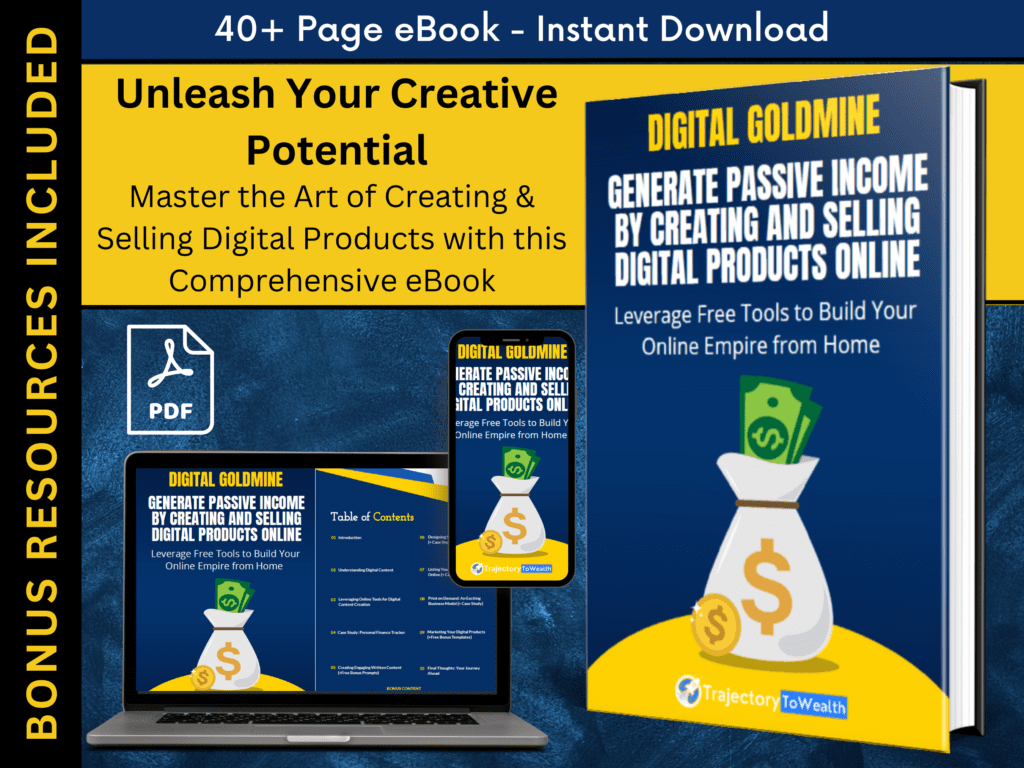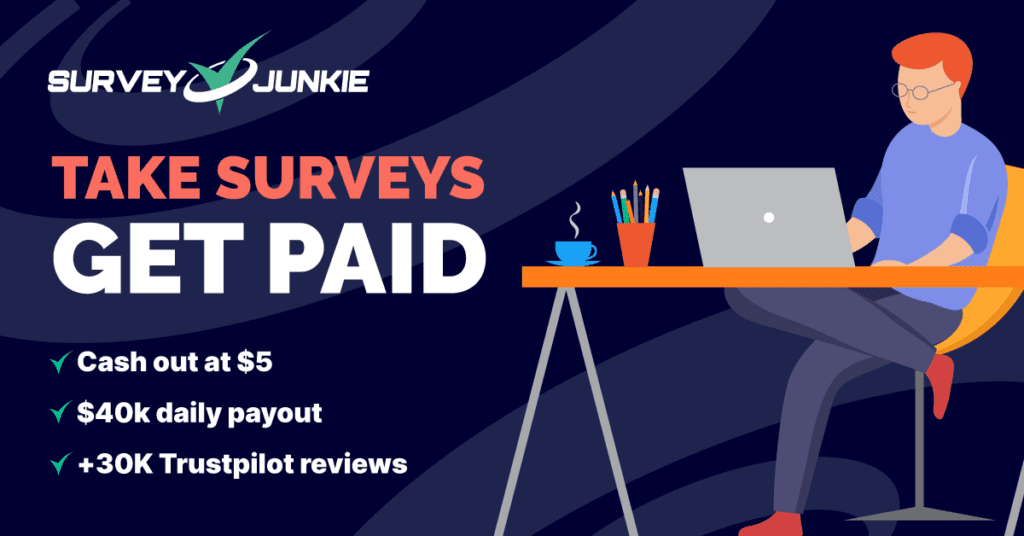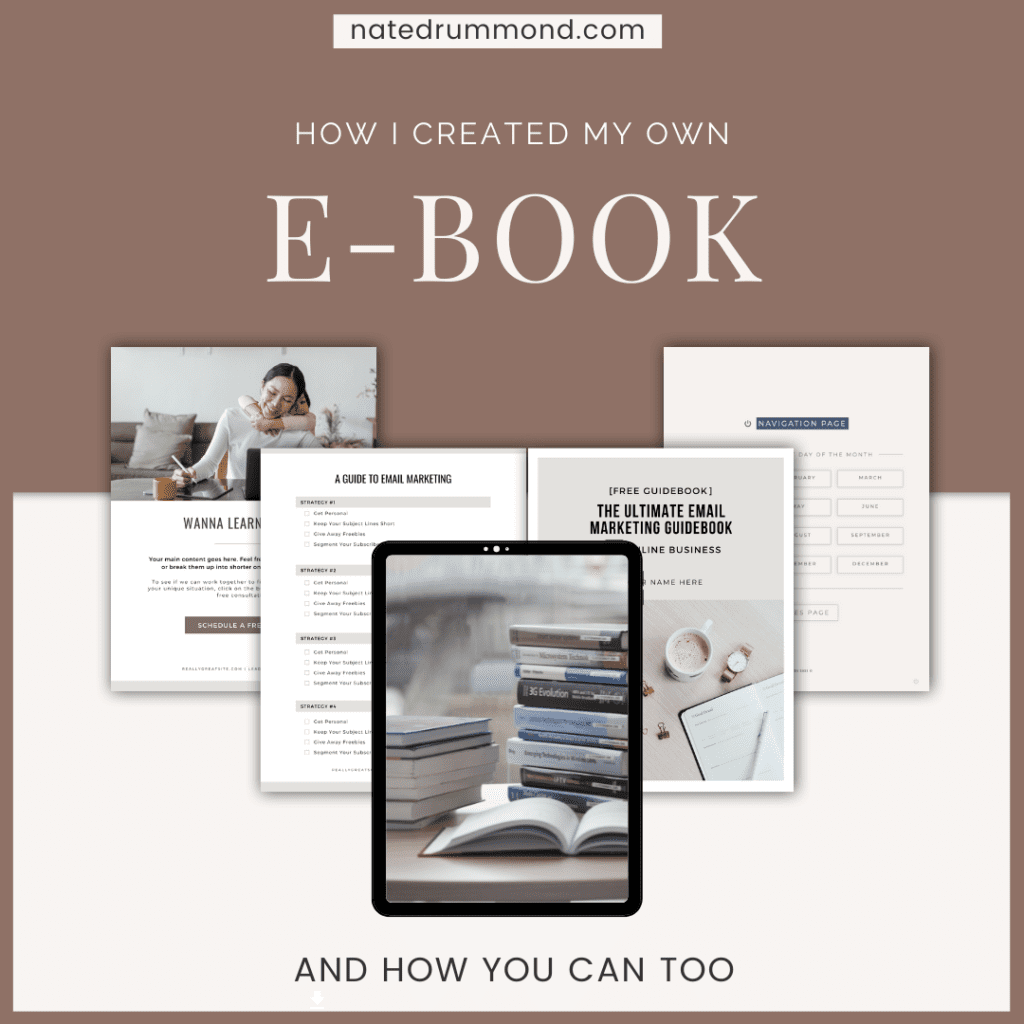Have you ever scrolled through your social media feeds or browsed online marketplaces and been awestruck by the professional-looking eBooks, stunning graphics, and other digital products?
I know I have.
I used to think that behind each of these creations was a team of experts — writers, graphic designers, marketing gurus. It seemed like a world far removed from my own.
The idea that I, an ordinary individual, could produce digital content of that caliber seemed like a far cry.
But let me tell you, my mindset took a complete U-turn when I embarked on my blogging and content creation journey.
As I delved deeper, I discovered a treasure trove of tools and resources that made the impossible seem possible. I realized that creating beautiful images and digital products wasn’t an exclusive club for the experts. It was accessible to everyday people like you and me.
Now don’t get me wrong, this realization didn’t happen overnight. I’ve been on my blogging journey for over a year now, and I’ve had many pain points that I’ve had to overcome.
But that’s why I’m here to share the lessons from my journey with you, to tell you that it’s not a far cry. It’s not out of reach.
Thanks to tools like Canva and ChatGPT, digital product creation is more accessible than you may think.
So, if you’ve ever felt like I did, thinking that creating professional digital content was beyond your reach, I invite you to keep reading. See how these tools can empower you to create and sell your own digital products, just like I have.
The Game-Changers of Digital Product Creation
In the digital age, the ability to create unique and appealing digital products is a valuable skill. This is especially true when those products can be created and sold entirely online, eliminating the need for physical inventory and shipping.
This is the world of digital product creation, a realm where creativity meets technology, and where tools like ChatGPT and Canva come into play.
Digital product creation is a broad term that encompasses a variety of items, from ebooks and online courses to digital art and software. These products can be created once and sold an infinite number of times, making them an attractive option for online entrepreneurs.
But how can you create digital products that stand out in a crowded marketplace? And how can you leverage platforms like Etsy and Gumroad to sell your creations?
The answer lies in harnessing the power of artificial intelligence (AI) and design tools.
ChatGPT, an AI developed by OpenAI, can be used to generate unique text-based products, such as blog posts, ebooks, or even poetry. Canva, on the other hand, is a user-friendly design tool that can help you create visually appealing digital products, from social media graphics to printable art.
In this guide, we’ll walk you through the process of creating digital products using ChatGPT and Canva, and how to list them for profitable sales on Etsy and Gumroad.
Whether you’re an experienced online seller or just starting out, this guide will provide you with the tools and knowledge you need to succeed in the world of digital product creation.
Understanding ChatGPT
In the realm of digital product creation, one tool stands out for its innovative approach and impressive capabilities: ChatGPT.
Developed by OpenAI, ChatGPT is an artificial intelligence model that uses machine learning to generate human-like text. It’s like having a virtual assistant that can write anything from blog posts to poetry, making it an invaluable tool for creating unique digital products.
ChatGPT, or Generative Pretrained Transformer 3, is the third iteration of the GPT series. It’s trained on a diverse range of internet text, which allows it to generate coherent and contextually relevant sentences based on the input it receives. This means that you can use ChatGPT to create a wide variety of text-based digital products.
For instance, you can use ChatGPT to write an ebook on a topic of your choice. You provide the AI with a brief description or an outline of the topic, and it generates the content for you.
Similarly, you can use ChatGPT to create engaging blog posts, informative articles, or even creative pieces like poetry or short stories. The possibilities are virtually endless when it comes to AI-generated products.
But how can you leverage ChatGPT for digital product creation?
The process is simpler than you might think.
First, you’ll need to provide the AI with a prompt or an outline. This gives the AI a starting point and a direction for the content. Then, you can fine-tune the output, adding your personal touch or specific information that you want to include.
The beauty of using ChatGPT in digital product creation is that it allows you to create high-quality, unique content quickly and efficiently. This means you can produce more products, reach a wider audience, and ultimately, increase your profitability on platforms like Etsy and Gumroad.
Leveraging Canva for Design
While ChatGPT is an excellent tool for creating text-based digital products, visual appeal is a crucial aspect of digital product creation.
This is where Canva comes in.
Canva is a user-friendly design tool that allows you to create stunning visuals without any design experience. From social media graphics to printable art, Canva can help you design a wide range of digital products.
Canva’s intuitive interface and vast library of templates make it a go-to tool for many online entrepreneurs. Whether you’re creating an ebook cover, a printable planner, or a social media post to promote your products, Canva has you covered.
To start designing with Canva, you’ll first need to choose a template that fits your product. Canva offers thousands of customizable templates, so you’re sure to find one that suits your style and needs. Once you’ve chosen a template, you can customize it by changing the text, colors, and images. You can also add elements like shapes, lines, and icons to make your design truly unique.
One of the key benefits of using Canva for digital product creation is its versatility. You can create a wide range of products, from printable art and planners to social media graphics and ebook covers. This allows you to cater to a broader audience and increase your potential for sales on platforms like Etsy and Gumroad.
Moreover, beyond the free version of Canva, Canva also offers a Pro version that comes with additional features like brand kits, custom fonts, and access to a wider range of templates. This can be a worthwhile investment if you’re serious about digital product creation.
In the next sections, we’ll delve into how to prepare your ChatGPT and Canva creations for the marketplace and how to list them for profitable sales on Etsy and Gumroad.
Preparing Your Digital Products for Sale
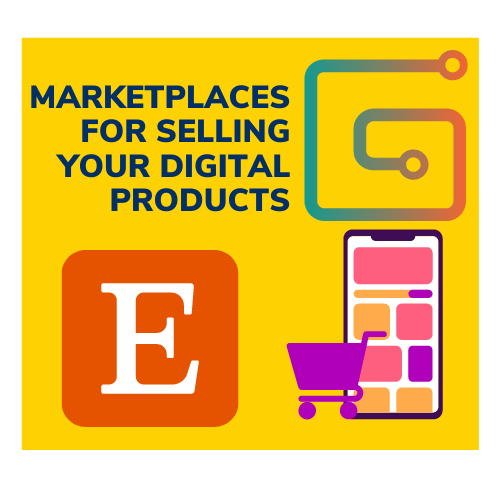
After you’ve created your digital products using ChatGPT and Canva, it’s time to prepare them for the marketplace.
This process involves several steps, from finalizing your product to setting up your listings on platforms like Etsy and Gumroad.
First, you’ll want to review your digital products thoroughly.
For text-based products created with ChatGPT, this means checking for any errors or inconsistencies in the text. While ChatGPT is a powerful tool, it’s not perfect, and it’s important to ensure that the content it generates meets your standards. You need to add your personality to it – make it your own.
For visual products created with Canva, you’ll want to ensure that the design is polished and professional-looking. Check for any alignment issues, color inconsistencies, or other design flaws.
Next, you’ll need to decide on a price for your digital products. Pricing can be tricky, especially for digital products. You’ll want to consider factors like the time and resources you invested in creating the product, the perceived value of the product, and the prices of similar products in the marketplace.
Once you’ve finalized your product and decided on a price, it’s time to create your product listings.
This involves writing a compelling product description, choosing the right keywords for SEO, and uploading high-quality images of your product. ChatGPT is a great tool to help out with this, by asking it the right prompts, you can construct optimized descriptions extremely efficiently.
Remember, your product listing is often the first impression potential customers will have of your product, so it’s important to make it count.
In the following sections, we’ll explore how to list your products on Etsy and Gumroad, two popular platforms for selling digital products.
We’ll provide tips for successful selling and compare the two platforms to help you decide which one is the best fit for your digital product business.
Selling on Etsy
Etsy is a popular platform for selling handmade and vintage items, as well as unique digital products. With millions of active buyers, Etsy can provide a vast audience for your ChatGPT and Canva creations.
To list your digital products on Etsy, you’ll first need to set up a shop. This involves choosing a shop name, creating a logo and banner (which you can easily do with Canva), and writing a shop description. Remember to use relevant keywords in your shop description to help potential customers find your shop (again, ChatGPT can help you with these).
Once your shop is set up, you can start listing your products. Each listing on Etsy requires a title, description, images, and keywords. The title and keywords are particularly important for SEO, so be sure to include your focus keyword and its synonyms in these sections.
Writing a compelling product description is also crucial. This is where you can showcase the unique features and benefits of your digital product. You can also include information about how the customer will receive the product (since it’s a digital item) and how they can use it.
Pricing your products on Etsy can be a bit challenging, as you need to strike a balance between making a profit and staying competitive. It’s a good idea to research similar products on Etsy to get an idea of the going rate.
Finally, promoting your Etsy shop and listings is key to driving traffic and making sales. You can use social media, email marketing, and SEO strategies to attract potential customers to your shop.
In the next section, we’ll take a look at Gumroad, another excellent platform for digital products.
Selling on Gumroad
Gumroad is another excellent platform for selling digital products.
It’s particularly popular among creators, artists, and entrepreneurs who want to sell directly to their audience without the need for a third-party marketplace.
Setting up a Gumroad account is straightforward. You can start by creating a profile, which includes information about you and your brand. Just like with Etsy, you can use Canva to create a professional-looking profile picture and cover image. The good news is that you can reuse the images and descriptions you created for your Etsy store, just copy them over to your Gumroad store.
Listing your digital products on Gumroad is a simple process. You’ll need to upload your product, set a price, and write a description (which you’ll already have if you created an Etsy listing earlier).
Unlike Etsy, Gumroad doesn’t use a keyword system for its listings, so the focus is on creating a compelling, detailed product description that clearly communicates the value of your product.
One of the unique features of Gumroad is the ability to offer “pay what you want” pricing. This can be a powerful strategy for attracting customers and increasing sales, especially for new products or products with a wide potential price range.
It basically allows you to set a ‘minimum price’, which as the name suggests, is the minimum amount someone can buy your product for. But it’s not the MAXIMUM amount they can buy it for. Instead, your customers may opt to pay a higher price to show their support.
Promoting your Gumroad products is crucial for driving traffic and making sales. You can share your products on social media, send them to your email list, or even create a website or blog to showcase your products.
SEO strategies can also be effective, especially if you’re creating content that includes your focus keyword and its synonyms.
Let’s now compare Gumroad and Etsy, two of the most popular platforms for selling digital products. We’ll look at the pros and cons of each platform to help you decide which one is the best fit for your digital product business.
Gumroad vs Etsy: Which Platform is Right for You?
Now that we’ve explored how to list your ChatGPT and Canva creations on both Etsy and Gumroad, you might be wondering which platform is the best fit for your digital product business.
Both platforms have their strengths and weaknesses, and the best choice depends on your specific needs and goals.
Etsy has a large, established audience of buyers who are looking for unique and creative products. This can be a major advantage if your digital products fit into the categories that are popular on Etsy, such as printable art, digital patterns, or ebooks. Etsy’s keyword system also makes it easier to optimize your listings for SEO, which can help attract more visitors to your shop.
However, Etsy also has a lot of competition, and it charges listing and transaction fees that can eat into your profits. Overall, Etsy takes more of a cut of your profits when compared to Gumroad.
However, in saying that, if you do want to use Etsy to list your products, you can sign up using this link to get the fees on your first 40 listings waived. This is great for the initial phase of setting up your shop when you’re only listing your first few products that may not have developed much traction just yet. You can instead focus on producing digital products, listing them, and then increasing your reach. And then, by the time you’ve listed 40 products, it’s more than likely that you’ll be making plenty of sales by then, so the listing fee won’t be as much of a worry.
Additionally, Etsy controls the layout and design of your shop, which can limit your ability to brand and customize your shop.
Gumroad, on the other hand, allows you to sell directly to your audience without the need for a marketplace. This can give you more control over your brand and customer relationships. Gumroad also offers more flexibility in terms of pricing, with options for “pay what you want” pricing and pre-orders.
However, Gumroad doesn’t have the same built-in audience as Etsy, which means you’ll need to work harder to drive traffic to your products.
Gumroad also charges a 10% transaction fee, but this is only taken once you sell a product. So it means you never have to pay to list a product – Gumroad only makes money when you make money.
Both Etsy and Gumroad are excellent platforms for selling digital products created with ChatGPT and Canva. The best choice depends on your specific needs, goals, and the nature of your products.
However, there is a third option – use both.
This is what I do, I list my products on both platforms, which allows me to tap into the wide customer base that Etsy brings, whilst still having the ability to drive my followers from social media and other platforms direct to Gumroad.
Conclusion
Mastering digital product creation using ChatGPT and Canva can open up a world of opportunities for online entrepreneurs.
These tools allow you to create unique, high-quality digital products that can be sold on platforms like Etsy and Gumroad.
ChatGPT, with its ability to generate human-like text, can be used to create a wide range of text-based digital products, from blog posts and ebooks to poetry and short stories.
Canva, on the other hand, allows you to create visually appealing designs without any design experience, making it an invaluable tool for creating digital products.
Listing your products on Etsy or Gumroad can provide you with access to a large audience of potential buyers. However, each platform has its strengths and weaknesses, and the best choice depends on your specific needs and goals.
In the end, the key to successful digital product creation lies in leveraging the right tools, creating products that provide value to your customers, and effectively marketing your products.
With ChatGPT and Canva, you have the tools you need to create unique digital products. And with platforms like Etsy and Gumroad, you have the means to reach a vast audience of potential buyers.
Read This If You're Serious About Creating Digital Products
If you’ve found this guide helpful and you’re eager to dive deeper into the world of digital product creation, I have something that might interest you.
I’ve created a comprehensive ebook that takes everything we’ve discussed in this post to the next level. This ebook provides a detailed guide to creating and selling digital products online, with a focus on various marketplaces including Etsy and Gumroad.
In this ebook, I share real-world case studies of creating my own digital products in various mediums, such as ebooks, Canva templates, and Google Sheets, using both Canva and ChatGPT.
I’ve also included bonus resources such as ChatGPT prompts for creating your products and over 30+ Canva templates that you can access and edit to use in your own content. These templates are designed with the correct sizing dimensions for use on different platforms, saving you time and effort.
This ebook is more than just a guide; it’s a toolkit that provides you with the resources, examples, and step-by-step instructions you need to succeed in digital product creation.
This eBook will show you exactly how to go from a blank template, to generating optimized written content with built-for-you ChatGPT prompts and Canva design templates. Not only that, but the eBook also explains how to convert your written content into high-quality PDF format, so that you can create your own eBooks and list them for sale.
Or perhaps you may be interested in exploring the world of print-on-demand products, allowing you to create customized logos and graphics that can be printed on apparel such as T-Shits and mugs and sold direct to your customers without you ever having to worry about inventory or shipping. My eBook guide covers all this and more!
So if you’re serious about mastering digital product creation and turning it into a profitable venture, this ebook could be the resource you’ve been looking for.
To learn more about the ebook and how it can help you on your digital product creation journey, you can click here to learn everything you need to know.
Remember, the world of digital product creation is vast and full of potential.
With the right tools and resources, you can create unique, high-quality digital products that provide value to your customers and generate a steady stream of income.
So why wait? Start your digital product creation journey today!

